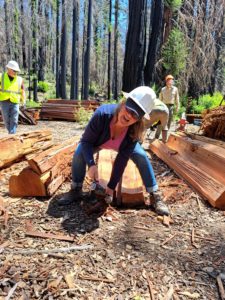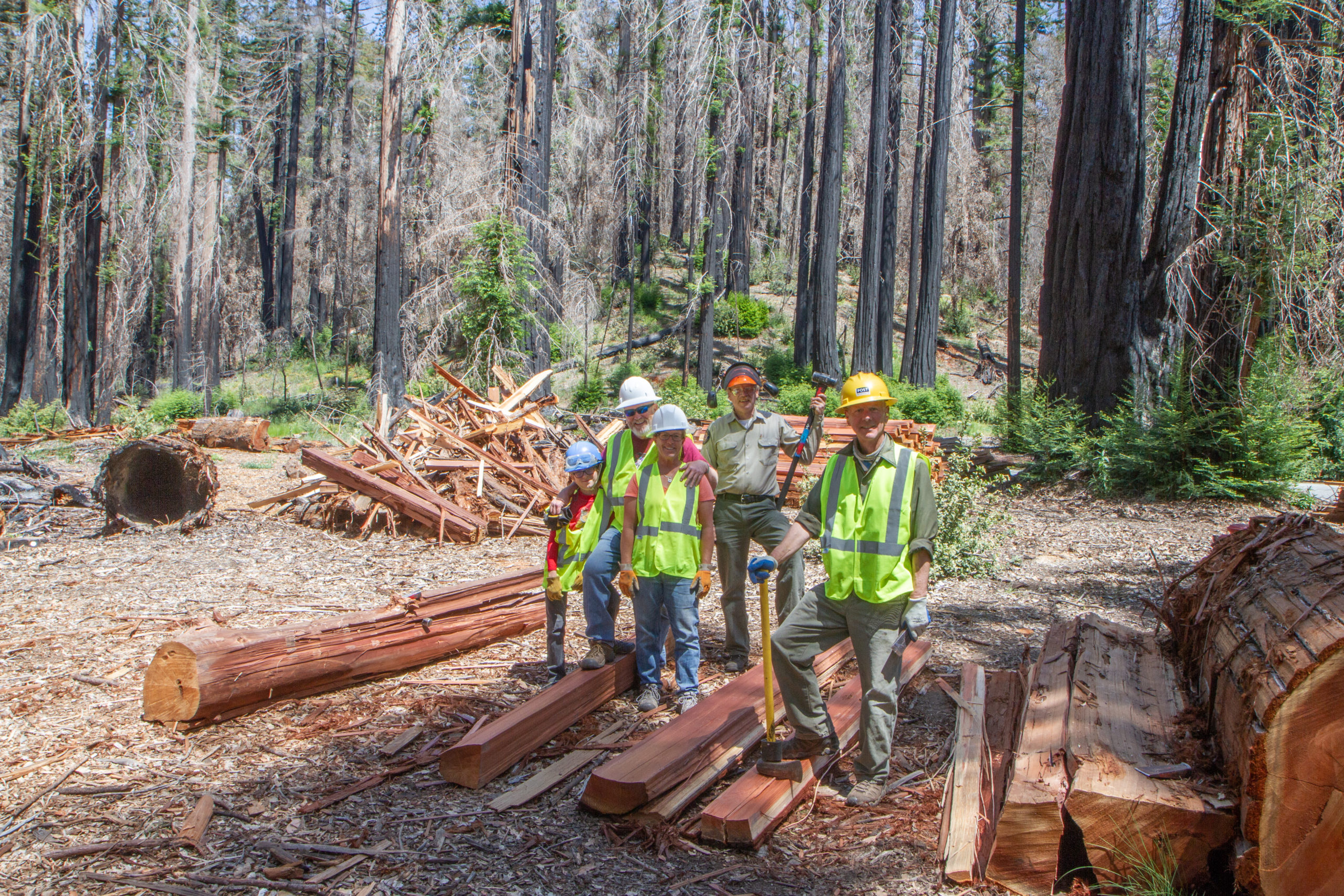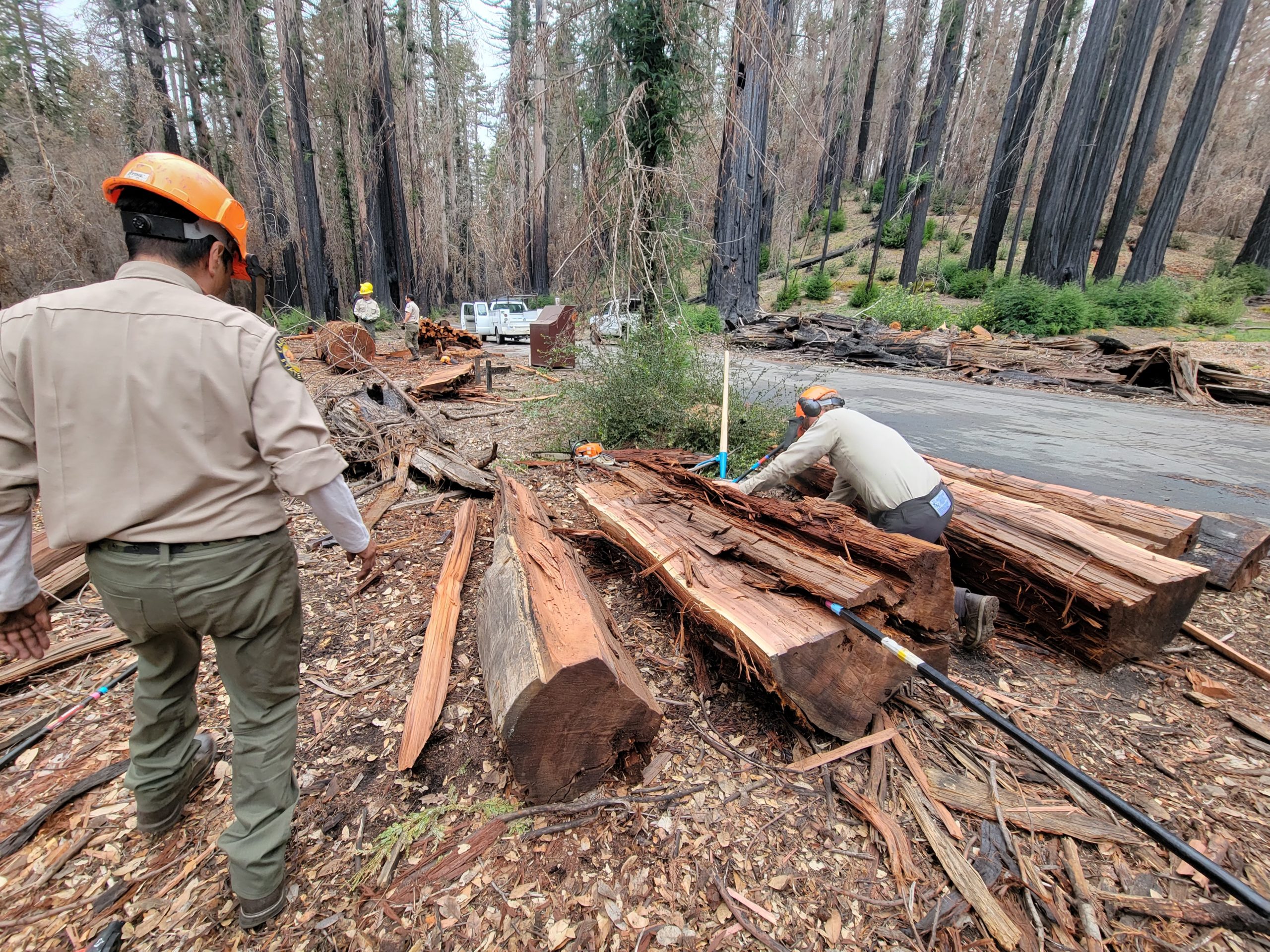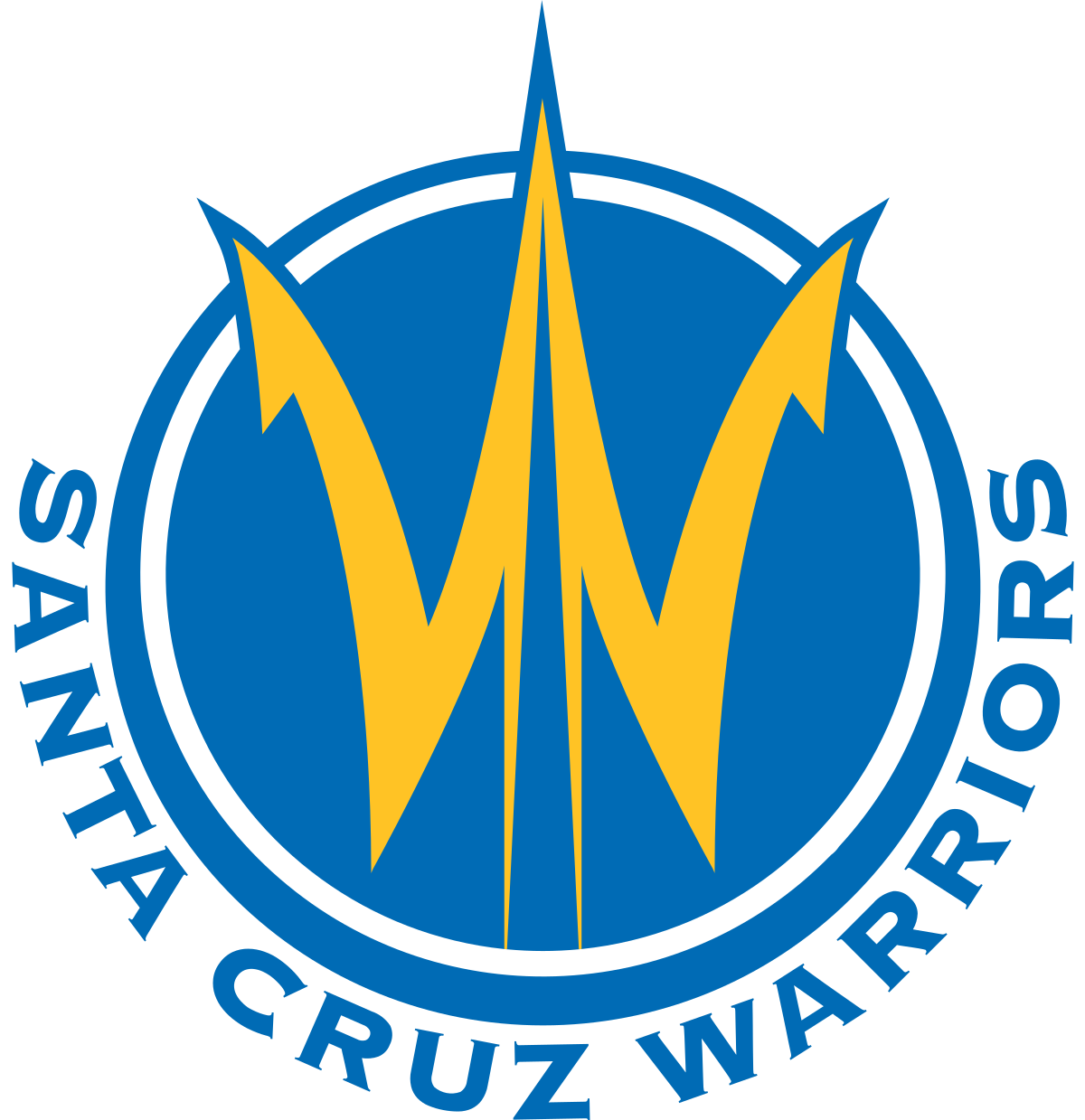Sept. 28, 2022—SANTA CRUZ, CA — Big Basin Redwoods State Park was saved from the ax 120 years ago and, in a peculiar twist of fate, it was an ax that has been key in the rebuilding process following the devastating CZU Fire in 2020.
The wildfire burned over 97 percent of the park and destroying nearly every structure, including the Park Headquarters, campgrounds and housing for park employees. This summer, Big Basin Redwoods State Park reopened through a limited access day-use reservation system.
Hundreds of feet of split rail fence are among the first evidence of new construction in the park. Crafted by hand by State Parks staff, volunteers and members of the California Conservation Corps, the rails are derived from redwood trees so fire-damaged, they had to be felled. Patrick Courtright, State Parks Maintenance Supervisor, led the effort to process the logs into something that could be useful to the park when it reopened.
“We did what we needed to do to get the park open,” Courtright said. “It’s a unique type of work. It’s not something you get to do every day.”
In fact, it’s so unique that it proved impossible to find a local saw shop or lumber cutter who had the right wedge — a checker — for the job.
“This is an old-school technique,” explained Juan Villarino, Santa Cruz District, Mountain Sector Park Maintenance Chief II. “This is not something that’s practiced frequently,”
Through a connection, Courtright found a forge in Washington state that could make checker wedges to his specifications. Understanding the breadth of the work ahead, State Parks ordered about a half dozen. Mountain Parks Foundation generously covered the cost of the wedges.
Creating split rails begins with a log that’s 3 to 5 feet in diameter and 10 feet long. Once it’s checked for end rot and preexisting splits that would terminate the split run, crews split the log in half using a checker wedge. From there, it’s a labor-intensive effort — inserting splitting wedges to crack the log from the top down. The log is halved, then quartered. Sheets will peel off and those can be split into rails.
“Sometimes the log will split clean but a lot of times you get there and you have to use pry tools like rock bars and pry bars to finish,” Courtright explained. “You’re just pounding like the dickens.”
Two 10-foot rails become a section of fencing. Another 10-foot rail is halved and used for posts, 2 feet in the ground and 3 feet up. The fencing pieces are smoothed using a draw knife, essentially a rudimentary form of sanding, to prevent visitors from getting splinters when they lean on the fences.
“Making rails by hand is not an easy thing to do,” Villarino said. “For weeks, months we had people out here making rail.”
One log takes a crew about 2 hours to break down and generates 30 to 40 rails. State Parks staff from Facility Maintenance, Natural Resources Management, Visitor Services, Roads and Trails crews, as well as volunteers provided the time intensive labor to make the split rail. So far, crews have made about 400 rails.
“It takes a lot of finesse to get done,” Courtright said.
Staff, volunteers, contractors and the California Conservation Corps all assisted with installation of the fencing along the Redwood Loop Trail near the Campfire Center in advance of Big Basin’s reservation-only day-use access starting on July 22.
Friends of Santa Cruz State Parks, through its unique position as co-management partner with State Parks, created and is operating the Big Basin Day-Use Reservation System. Reservations are required for day-use parking and are $8 each (including a $6 day-use parking fee with a $2 reservation fee). State Parks day-use passes and other park entry programs are honored but a reservation fee of $2 is charged. A total of 84 parking spots and 4 disabled spots are offered daily. Check availability. All fees support the park.
About Friends of Santa Cruz State Parks


















